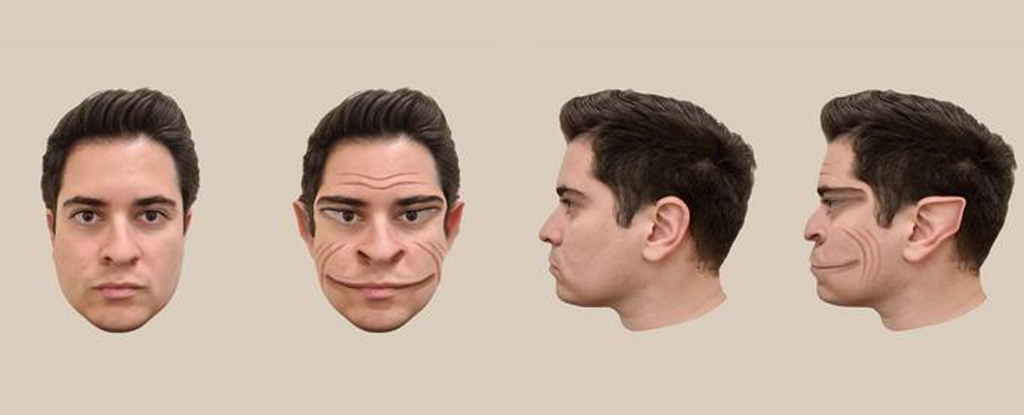As far as the human brain is concerned, there’s something special about another human’s face. So special, great chunks of neurological processing are devoted to rapidly interpreting facial features as either icons of familiarity or strangers to fear.
A 58-year-old US man presenting at Dartmouth College’s Department of Psychological and Brain Sciences sees the world a little differently. Inside his head, that same face-reading hardware tugs and pulls faces into something monstrous. Demonic, even.
Diagnosed with a rare neurological condition called prosopometamorphopsia, or PMO, the patient provides researchers with a unique opportunity to understand better how visual systems typically process identifying characteristics to identify friend from foe.
For more than two-and-a-half years prior to attending the Dartmouth laboratory, the man had watched surrounding faces distort into grotesque caricatures. Grooves appeared on foreheads, cheeks, and chins. Eyes and mouths stretched.
Distressing at first, in time the man habituated to the bizarre masks his mind imposed over those he encountered. He could still recognize people, and his reality remained firmly anchored in place. Horrifying as they were, these weren’t actual demons he was seeing.
Yet something wasn’t right. Life wasn’t always this way, after all. Perhaps his history of bipolar disorder or PTSD was related? Maybe the serious head injury he experienced in his early 40s had left some kind of trauma, or the toxic dose of carbon monoxide he inhaled four months before the distortions emerged may have played a role.
As Dartmouth College psychologists Antônio Mello, Daniel Stehr, Krzysztof Bujarski, and Brad Duchaine conducted a series of tests, it became clear that their subject didn’t experience PMO in an entirely typical fashion.
Though the condition can present in many ways, turning people into demons and dragons, puffing out jowls and cheeks, pinching at noses, or expanding eyes, it usually affects flattened images of faces as readily as faces in the flesh.
“In other studies of the condition, patients with PMO are unable to assess how accurately a visualization of their distortions represents what they see because the visualization itself also depicts a face, so the patients will perceive distortions on it too,” says Mello, the case study’s lead author.
In this case, only real-life faces were affected. A photograph of the same features remained undistorted, providing the researchers with a unique opportunity to accurately map the precise shifting in characteristics. By providing the man with photographs of volunteers present in the room, the researchers could study detailed comparisons of the contrasting images.
Historically, prosopometamorphopsia was regarded as a form of face blindness, or prosopagnosia. However, it’s becoming clear that the two conditions need not accompany each other, and the underlying mechanisms only partially overlap.
The condition is now viewed as a visual distortion, one of 40-odd examples of what’s regarded as Alice in Wonderland syndrome, which typically skews perception to make people or objects look larger or smaller than they truly are.
Finding ways to distinguish conditions with similar neurological causes, even when they present in such dramatically different ways, is vital for providing accurate prognoses and treatments.
“We’ve heard from multiple people with PMO that they have been diagnosed by psychiatrists as having schizophrenia and put on anti-psychotics, when their condition is a problem with the visual system,” says Duchaine, a psychologist at Dartmouth College and the case study’s senior author.
As for the case study’s subject, it’s speculated a small, 1-centimeter (about half an inch) lesion seen to the upper left of his hippocampus in an MRO scan might be responsible.
The good news is after a year of observations, the lesion has remained unchanged. And by sharing his experience, it just might help others in similar positions feel less distressed and alone.
“It’s not uncommon for people who have PMO to not tell others about their problem with face perception because they fear others will think the distortions are a sign of a psychiatric disorder,” says Duchaine.
“It’s a problem that people often don’t understand.”
This case study has been published in The Lancet.





